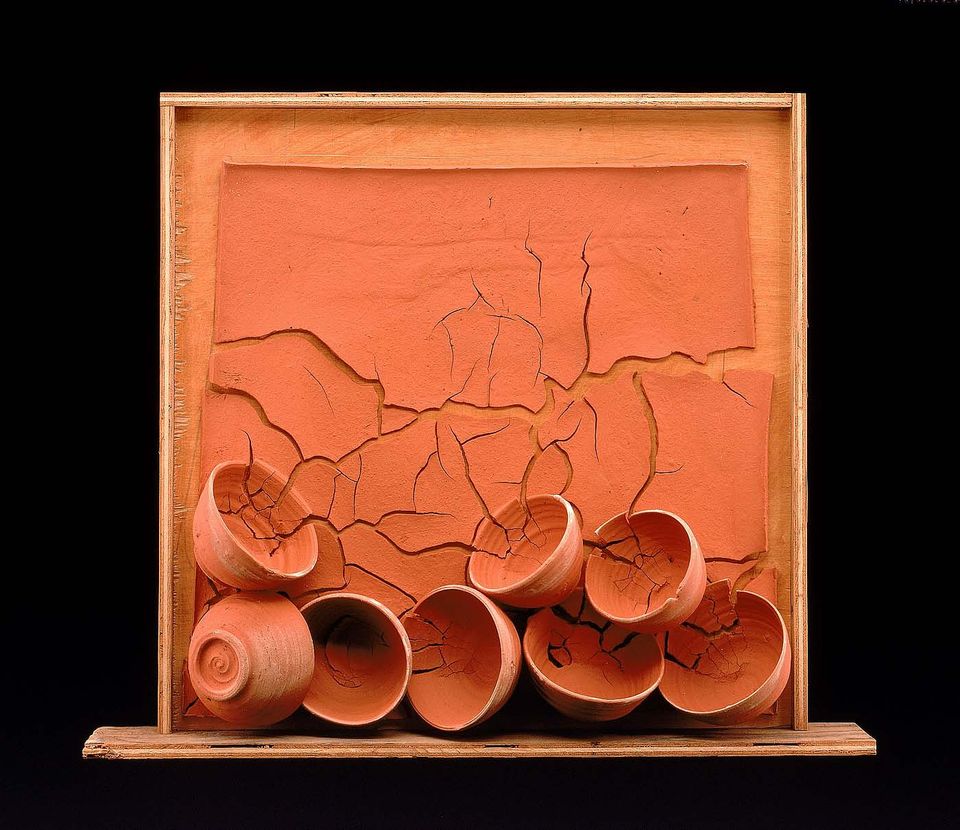
Over the last few months no fewer than three local exhibitions have featured works by Margaret Boozer, giving viewers ample opportunity to think and rethink about her work. I didn't expect I would warm up to these pieces. The boundary between craft and fine art, insofar as there is one anymore, has been fairly well mapped. But Boozer's nuanced exploration of her medium—clay—rescues her work from this debate.
The artist approaches traditional ceramics with an eye for painting. Typically, her works are ceramic and steel constructions that resemble paint applied over a support (i.e., canvas). Boozer's works deviate from the traditional limitations of ceramics as vessels, but she doesn't ignore that history. In fact, works like the one shown here (from the Smithsonian American Art Museum's Renwick Gallery) even "cite" bowls and plates, which are included as sculptural elements.
Clay, especially as Boozer uses it, is an unruly medium. Yet the craft of ceramics is exacting. Mistakes result in warping and cracking. I think this explains why many artists who work in ceramics and choose to abandon the vessel tradition wind up making extremely focused, narrative-driven works. The demands of precision facilitate narrative artworks. But Boozer lets the material and not the desired result dictate the terms of her work. Her work not only has the look of clay as you find it in the earth, but it also emphasizes the geological processes by which clay is formed over time. And the medium does have terms—hard, complex, physical rules that predict its "behavior."
As a sculptor, Boozer encourages the unpredictable results of the material, as it simply does what it does. She disguises her own hand underneath the distortions promoted by the drying process. And as a teacher, Boozer has greatly improved the area's clay consciousness. Her Red Dirt Studio, located near a quarry that features several distinct categories of clay, hosts a new generation of artists such as Jenna McCracken, who marries ceramics with astute social–political observation and even performance.


















